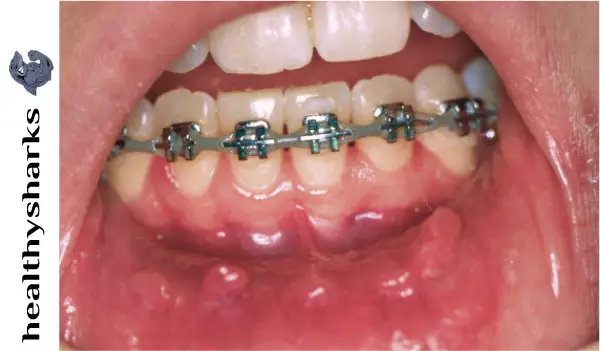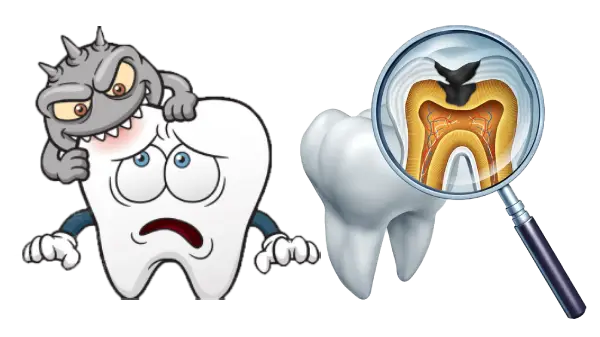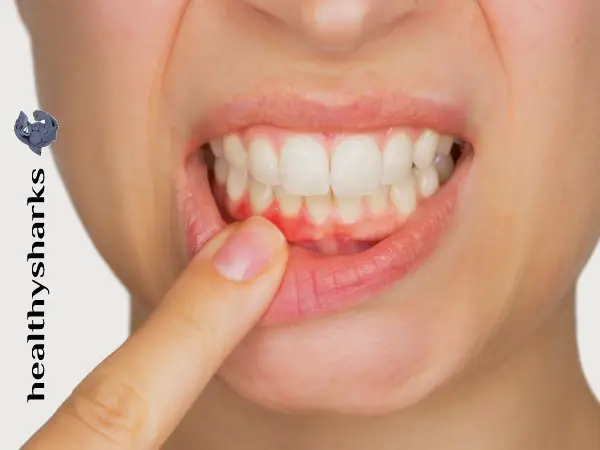Orthodontic damage
Although most orthodontic patients don't suffer from significant harmful effects related to it, every patient on the calendar must be informed of all the negative effects that may result from it.
Pain
The pain and annoying feeling caused by the braces are one of the most prominent fears of patients after they fear the general appearance of the braces is metal. Fortunately, the pain does not accompany the patient throughout the treatment period, and it is not as bad as the person imagines. In fact, the patient feels pain in the gums and teeth at first when Orthodontic installation, and each time the doctor tightens the orthodontic wires, in general, the feeling of pain and discomfort disappears within a few days, and to help this, some instructions can be followed that will reduce the feeling of pain:
- Take over-the-counter pain relievers to take them: such as ibuprofen and acetaminophen
- Application of local anesthetic: on the gums, and it is applied using a finger or cotton.
- Apply an ice pack covered with a cloth to the face.
- Eating soft foods that do not require effort when chewing; Such as soup, yogurt, or ice cream.
- Gargling with a saline solution consisting of one teaspoon of salt added to a cup of warm water.
- Excessive drinks or cold foods.
- Avoid sticky foods that may stick to or dislodge the braces. Like frankincense.
- Clean the teeth and the spaces between the braces and dental braces well to avoid cavities.
Scratches and blisters
It is normal for the patient to feel small scratches and some sores inside the mouth with the installation of the braces, especially if the braces are fixed with clips, and this usually lasts for a few days until the mouth becomes accustomed to the presence of the braces and its shape, and this problem can be overcome by using orthodontic wax, which is the easiest and fastest way In protecting the mouth from ulcers and scratches during the early stages after orthodontic installation.
Tooth decay
The mouth contains millions of bacteria that stick to the surfaces of the teeth and mucous tissues, and it is indicated that some types of these bacteria have the ability to produce acids from the sugars that a person eats, and therefore a lot of sugars increases the production of these acids and thus the development of dental caries and in the event of a fixed orthodontic The process of cleaning the teeth becomes more difficult and the number of bacteria in the mouth may multiply, which makes the teeth more susceptible to decay if they are not cleaned properly, especially around orthodontic foundations. It would reduce the desired aesthetic result from orthodontic treatment. That is why the orthodontist monitors how well the patient takes care of his teeth during the treatment phase and gives him the necessary advice to improve dental care in order to avoid cavities and other problems that may occur. Among these tips are the following:
- Avoid eating foods and drinking liquids that contain sugars during the period between the main meals. The goal here is to reduce the sugar intake more than to reduce the quantity; Eating a certain amount of chocolate at once instead of eating it in small quantities several times is considered to be less harmful.
- Keeping the teeth clean by brushing them at least twice a day, and it is also recommended to take a toothbrush to work or school to clean teeth quickly between meals and to use revealing tablets that show areas of the mouth that have not been cleaned well.
- Use a toothpaste that contains at least 1450 parts per million of fluoride, due to its ability to strengthen the enamel layer of the teeth. As for children, the toothpaste used for them must contain a smaller amount of fluoride.
- Use a mouthwash that contains fluoride, and it is recommended to use it on a daily basis, and you must check the label on its package because fluoride is not available in all types of mouthwashes, and children should avoid using mouthwash.
Gum problems
Maintaining oral health is important for all people, but it is more important for patients undergoing orthodontic treatment, and therefore lack of dental care may lead to gingivitis and infection that slows the movement of the teeth, which in turn prolongs the period of orthodontic treatment, and sometimes gum infection Severe to the point of permanent damage to the supporting tissues of the teeth, so it is necessary for orthodontic patients to maintain good oral and dental health, and to follow the doctor’s instructions related to reducing the incidence of gum infection in addition to undergoing regular cleaning sessions with the doctor.
The appearance of white spots on the surfaces of the teeth
White spots appear around orthodontic brackets in the event of neglecting to clean the teeth for a long period of time, as harmful bacteria in the mouth work to decompose food residues and produce acids that demineralize the tooth enamel layer in what is known as the process of demineralization and cause the erosion of this layer, These spots are considered the stage that precedes cavities, and in some cases, these spots may appear despite following the doctor’s advice regarding dental care and undergoing frequent cleaning sessions. In this case, the doctor may resort to ending orthodontic treatment prematurely because the main goal is healthy teeth before perfect straightening.
Shortening or resorption of the roots of the teeth
Charlie Horses' painful muscular stiffness arises as a result of the narrowing caused by the braces around the base of each tooth to move it to its correct position. The pressure on the teeth causes an expansion of the periodontal membrane, which is located around the lower parts of the teeth, and it expands on one side and relaxes on the other. Bone Remodeling. It is worth noting that these processes are considered natural and necessary to complete the goal of the orthodontic, but over time they may negatively affect the length of the tooth roots due to the succession of bone dissolving and rebuilding processes.
Information about orthodontics
Orthodontics is a treatment based on moving the teeth or modifying their straightness to improve their appearance and functional performance, including distributing the occlusal force on all teeth and thus maintaining the health of the teeth, gums, and jaw joints. Orthodontics also contribute to the treatment of some breathing, chewing, and speaking problems, and it is worth saying that it may be an expensive treatment, and orthodontic treatment takes a long period of time, and the patient needs some time to get used to the presence of the orthodontic and to master how to take care of it.


















0 comments:
Post a Comment